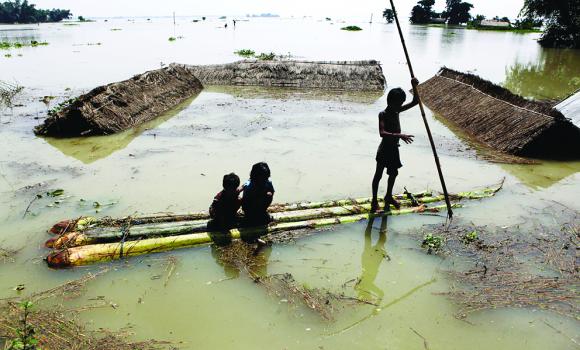
Guwahati, June 30: India: Torrential monsoon rains triggered floods which swamped villages in eastern India and forced at least 1.3 million people to leave their homes for higher ground, officials said yesterday.
The death toll from flood-related accidents in worst-hit Assam rose to 31 with five more deaths reported overnight from the northeastern state, regional Agriculture Minister Nilamoni Sen Deka told AFP.
An estimated 1.3 million people have been displaced from their homes due to the flooding, Deka said in Guwahati, Assam’s largest city.
“We have opened makeshift relief camps for the displaced,” he said as 21 of Assam’s 27 districts faced floods which began last weekend when annual monsoon rains lashed the tea and oil-rich state bordering Bangladesh.
In the adjoining northeastern Indian states of Arunachal Pradesh and Manipur, pounding rains brought flash floods, local officials said by telephone. There were no casualties reported from Arunachal Pradesh, which borders China, and Manipur which is adjacent to Myanmar. “The situation is very critical as floods have destroyed property and crops,” Arunachal Pradesh Chief Minister Nabam Tuki told AFP from capital Itanagar.
In Manipur, state disaster management official A. Singh said major rivers were “flowing menacingly” above danger marks.
“We are taking all precautionary measures to ensure safety of the locals,” Singh said. Authorities were also keeping a close watch on swollen rivers in rain-lashed West Bengal state in eastern India.
“Heavy rains in northern districts of the state have raised concerns of flooding in many areas as most rivers are in spate,” Gautam Dev, a regional minister, told AFP in state capital Kolkata.
In neighboring Bihar state, people fled their homes in two districts as the Kosi river threatened to overflow its banks, officials said. “Flood waters have already entered dozens of villages following incessant rains in catchment areas,” one official said.
The annual monsoon, crucial to India’s food production and economic growth, hit the tropical country earlier in the month.





Comments
Add new comment